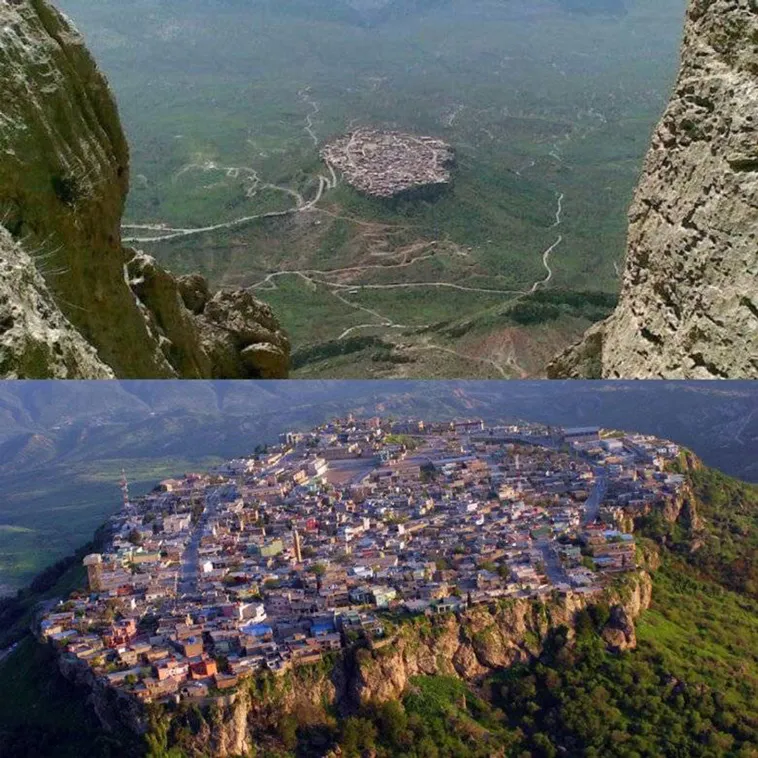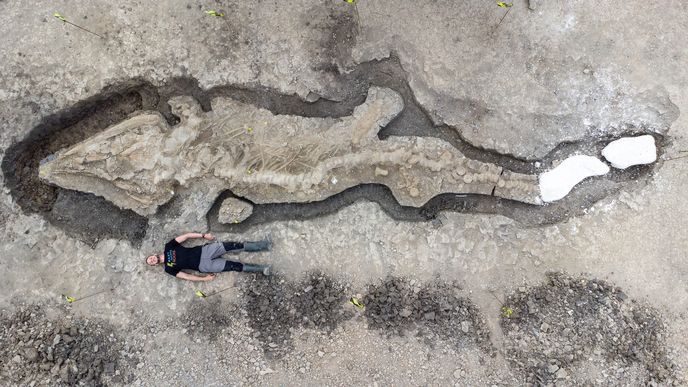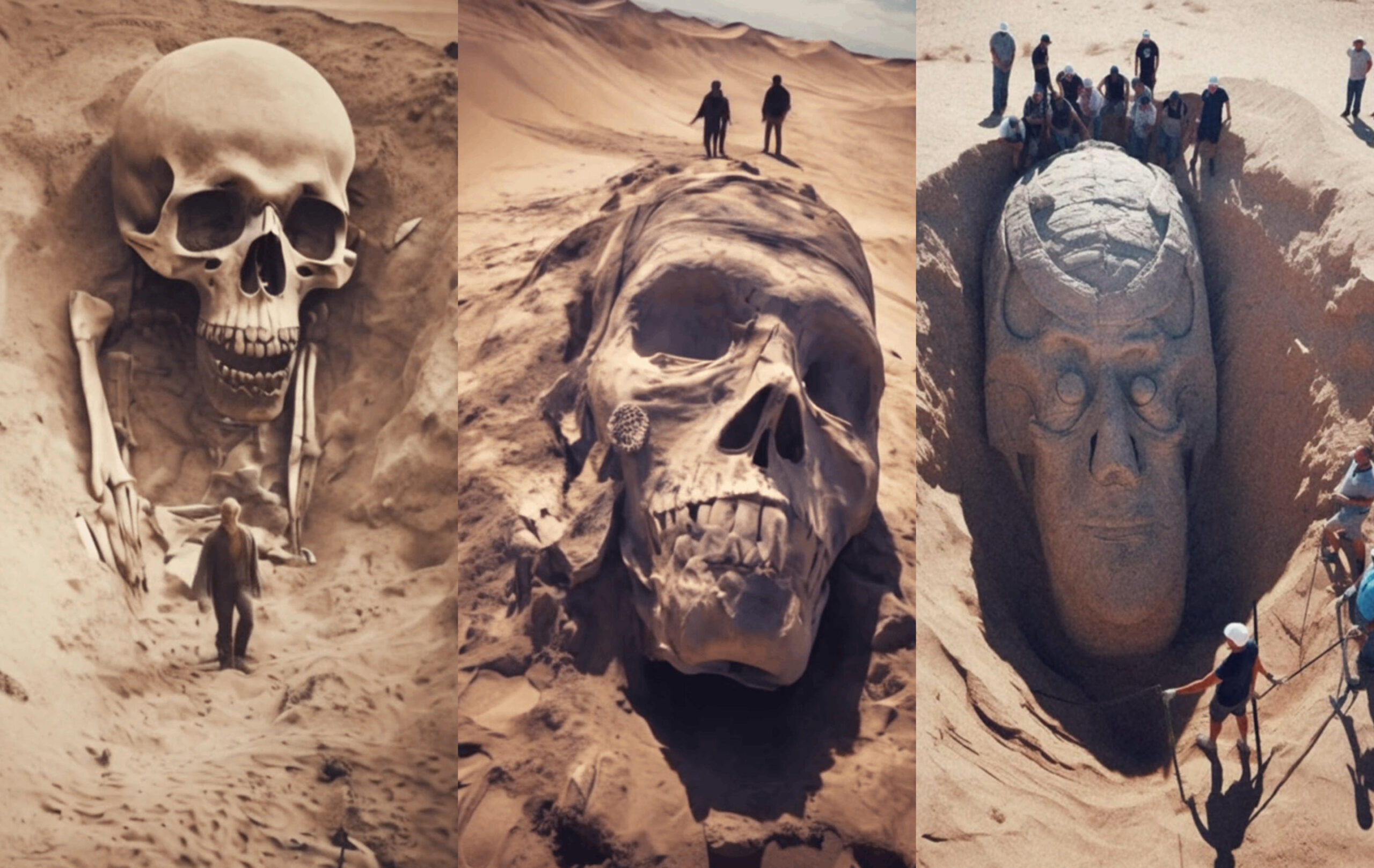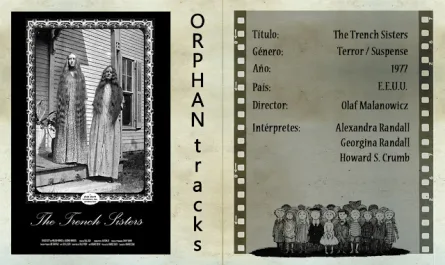Unearthed from the battlegrounds of the Roman-Gaelic Wars (circa 1st–3rd centuries AD), a spearhead lodged in human bone stands as a chilling testament to ancient warfare’s ferocity. Likely discovered in a site like Scotland’s Burnswark Hill, where Roman legions clashed with Caledonian tribes, this artifact—corroded iron fused with fractured bone—captures a moment of lethal violence frozen for over 2,000 years. Its design, engineered for penetration and destruction, reveals the Iron Age’s lethal artistry, while its grim context forces us to confront humanity’s enduring dance with savagery. More than a relic, this spearhead is a fractured mirror, reflecting both the ingenuity and brutality of civilizations and questioning how far we’ve truly distanced ourselves from our blood-soaked past.
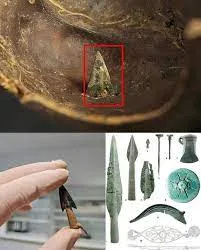
A Lethal Artifact
The spearhead, likely 15–20 cm long and forged from iron, was crafted for combat efficiency. Its leaf-shaped blade, typical of Roman or Celtic weaponry, was designed to pierce flesh and bone, maximizing damage with a broad cutting edge. The tang or socket, used to haft it to a wooden shaft, ensured durability during thrusts. Found embedded in a human femur or rib, the spearhead’s corroded edges and blood-stained grooves—possibly mineralized traces of tissue—preserve the violence of its use. Radiocarbon dating and context suggest it dates to the Roman campaigns in Britannia (43–410 AD), perhaps during Agricola’s invasions of Caledonia (77–84 AD) or the Severan campaigns (208–211 AD).
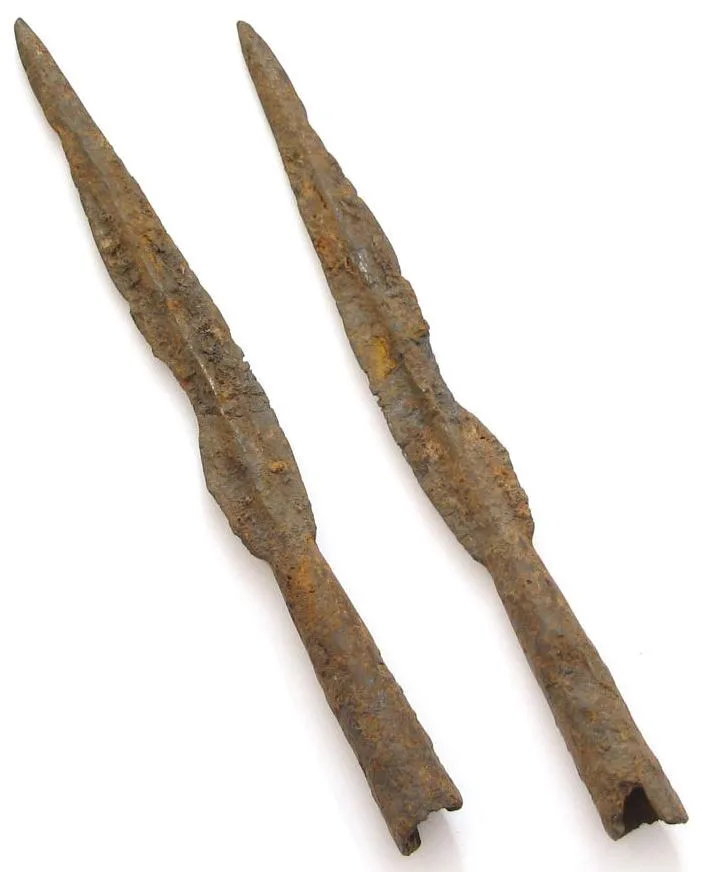
Sites like Burnswark Hill, a 1st-century AD battleground, have yielded similar finds, with Roman sling bullets and Celtic fortifications pointing to intense sieges. The spearhead’s fusion with bone indicates a fatal strike, likely delivered in close combat, where Roman legions or tribal warriors fought with brutal precision. The bone, possibly from a warrior aged 20–40 based on similar finds, bears micro-fractures from the impact, a snapshot of death in battle.

Warfare’s Lethal Artistry
The spearhead’s design reflects Iron Age pragmatism. Roman hasta or Celtic lancea spears were forged with carbon-rich iron, tempered for hardness yet flexible to avoid snapping. The blade’s shape allowed deep penetration, severing arteries or lodging in bone to incapacitate foes. Celtic warriors, like those of the Caledonii or Maeatae, used similar weapons, often paired with shields and short swords, emphasizing mobility against Rome’s disciplined formations. The artifact’s craftsmanship, with hammer-welded seams and a balanced weight (100–200 grams), shows a culture that honed violence into an art form, not unlike the Assyrian Lamassu’s protective grandeur or the Amazons’ strategic cornrows.
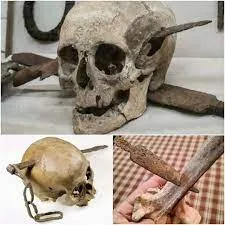
Yet its purpose was unambiguous: to maim, kill, and dominate. The spearhead’s presence in bone speaks to the chaos of battle, where survival hinged on split-second acts of brutality. Roman accounts, like Tacitus’ Agricola, describe Caledonian ferocity, with warriors charging in loose formations, their spears aimed at breaking Roman lines. This relic embodies that clash, a moment when one warrior’s life ended, and another’s intent prevailed.
A Mirror to Humanity’s Shadow
The spearhead’s visceral impact transcends its physical form. It forces us to confront uncomfortable truths about human nature. The Roman-Gaelic Wars, driven by empire-building and tribal resistance, mirror modern conflicts fueled by power, resources, and ideology. The same primal calculus—survival through dominance—underpins today’s wars, from drone strikes to territorial disputes, stripped of Iron Age simplicity but no less savage. The artifact mocks the notion of progress, suggesting that technology and reason merely cloak our violent instincts, not erase them.
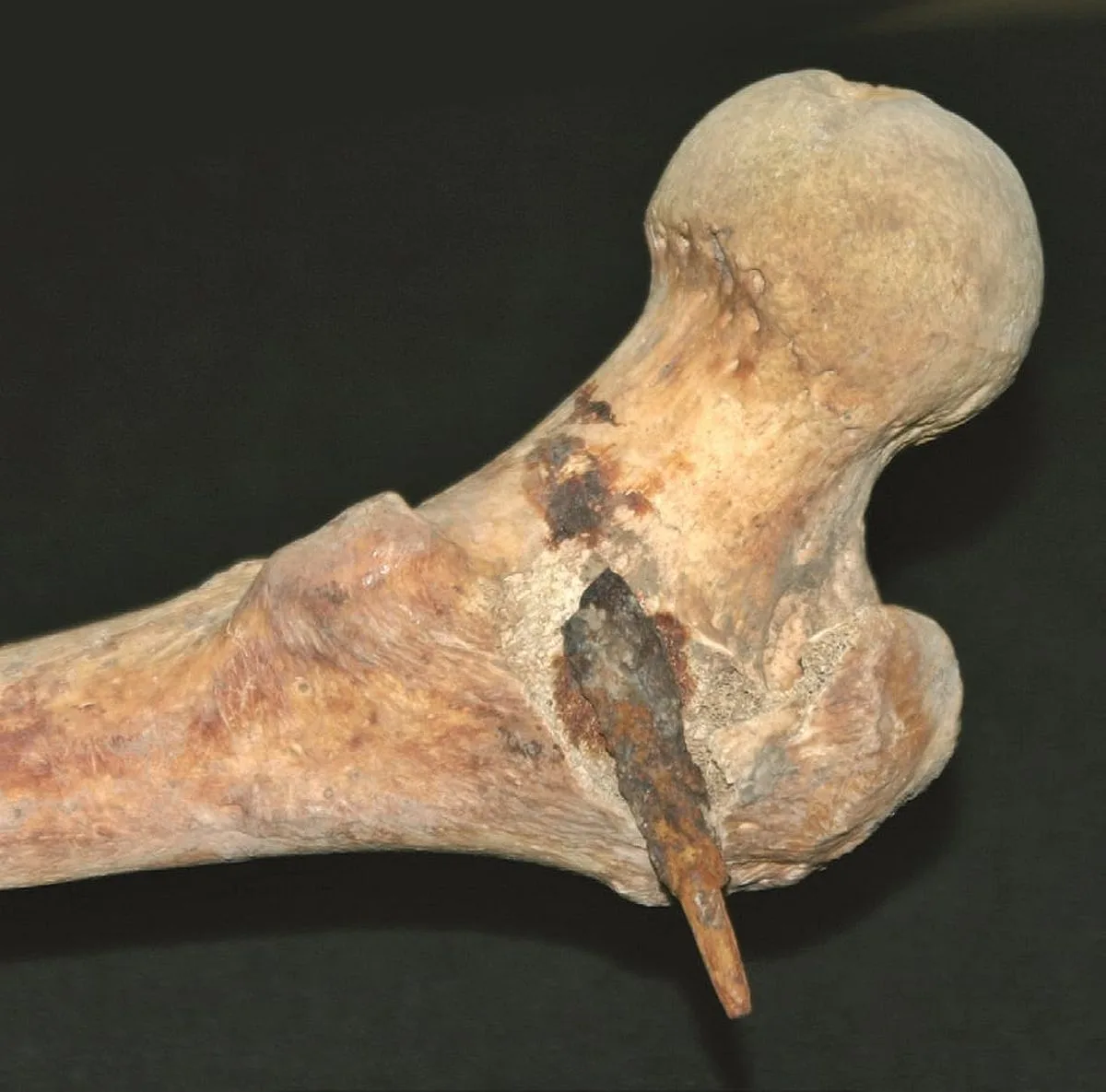
Its story echoes other relics, like the Tasmanian tiger’s rock art or the Coso Artifact’s mystery, where objects carry narratives of human endeavor and loss. The spearhead’s “scream from the past” demands we acknowledge violence as an enduring shadow, challenging the illusion of a civilized world free from its grip.
Lessons for Today
This relic, like the ingenuity of Newgrange or Baltermants’ frost-napping babies, offers lessons in resilience and reflection:

Confronting Truths: The spearhead’s brutality urges honest reckoning with humanity’s capacity for violence, fostering dialogue on peace-building and conflict resolution.
Craft as Legacy: Its craftsmanship, like the Lamassu’s carvings, shows how skill endures, inspiring modern artisans to create with purpose and precision.

Preserving History: Protecting such artifacts, like HIMI’s ecosystems, ensures we learn from the past, grounding our understanding of progress in evidence.
A Screaming Relic

The spearhead in bone, a relic of the Roman-Gaelic Wars, is no mere artifact—it’s a portal to an era of clashing steel and fractured lives. Its corroded iron and bloodied grooves whisper of ancient warfare’s artistry and savagery, demanding we face the uncomfortable continuity of human violence. Like the Medusa head’s protective gaze, it guards a truth: our progress is haunted by our origins. This frozen embrace of bone and blade refuses to be buried, urging us to listen to its scream and question what it means to be human.
